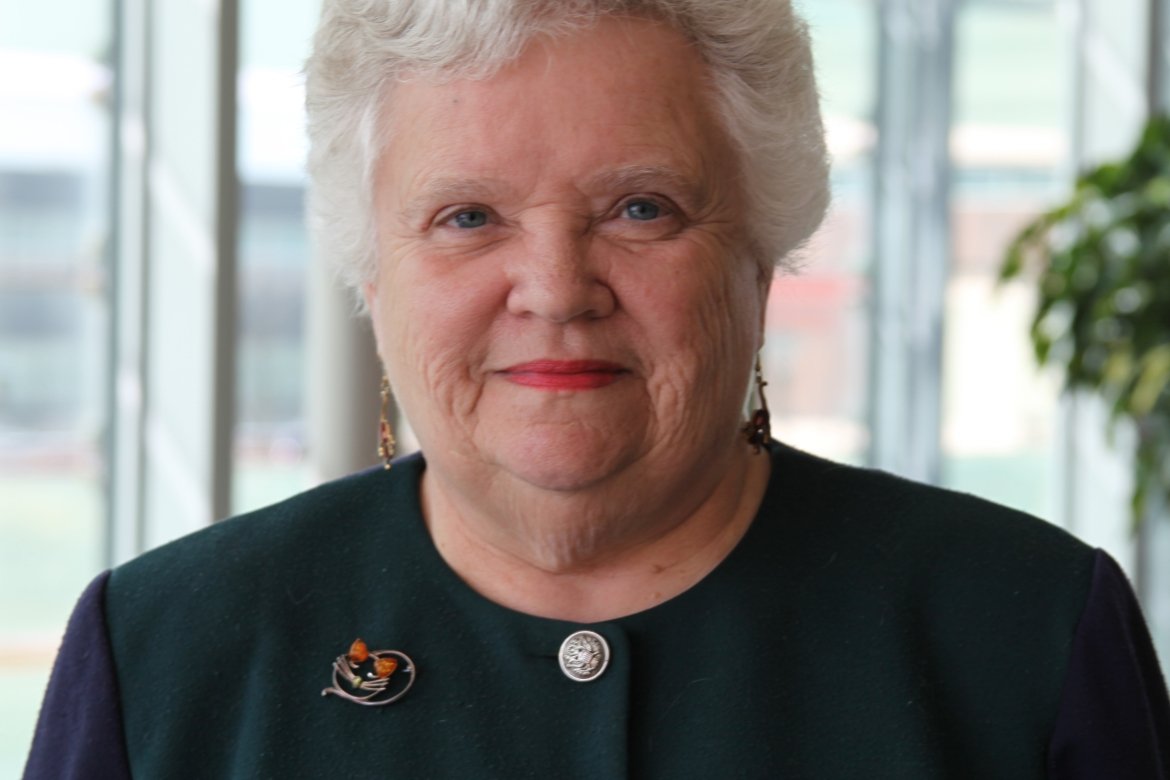A public health wake-up call

At the University of Nebraska Medical Center, Mount Holyoke alumna Eleanor Rogan ‘63 chairs a department doing urgent COVID-19 research.
Public health researchers suddenly find themselves under the spotlight. As billions of people around the globe have socially distanced in the face of the COVID-19 pandemic, scientists are racing to understand how the virus spreads and create effective vaccines and tests.
Amid dire circumstances, Americans have woken up to the importance of public health, said Eleanor Rogan ’63, chair of the Department of Environmental, Agricultural & Occupational Health in the University of Nebraska Medical Center’s College of Public Health.
The institution, located in Omaha, has emerged as a major center of COVID-19-related research in the United States. College of Public Health researchers are collaborating with government officials at the federal and state levels and making regular media appearances.
“We’ve been joking that at last people are thinking about public health. If you ask 10 people, nine would say ‘I have no idea what public health is,’” Rogan said. “But now everybody’s paying attention to it and understanding its importance.”
With one of the few biocontainment centers in the United States and the country’s only federal quarantine unit, the university has played an important role in the pandemic from the start. The biocontainment unit was built after 9/11 and first used during the 2014 Ebola epidemic. In February, 13 Americans who contracted the virus on board the Dawn Princess cruise ship were transported from Japan and quarantined at the medical center.
Since then, the institution’s COVID-19-related activities and research have ramped up significantly.
Members of Rogan’s department are in the process of publishing a paper describing sites of contamination in a room occupied by a COVID-19 patient. Their work details how long the coronavirus appears to be viable in the atmosphere and on surfaces, something that is still poorly understood.
Researchers in the Department of Environmental, Agricultural & Occupational Health are also assisting with a clinical trial of the antiviral drug remdesivir, which has shown some promise for treating COVID-19 patients.
They’ve also developed a protocol to sanitize N95 respirators by exposing them to strong UV light so that they can be reused, and are now studying how many times masks can be safely sanitized this way. Department members have also consulted with the U.S. military to understand which planes can transport highly infectious people most safely.
“We have a lot of experience out here,” Rogan said. “We’ve demonstrated to various authorities that we’re reliable and easy to work with.”
At the state level, her colleagues have worked with long-term care facilities and rural hospitals to implement recommended safety protocols for caregivers, residents and patients.
They’ve also worked with meat-packing plants in Nebraska to improve safety through personal protective equipment and changes to the working environment — a complex challenge given multilingual workforces, Rogan noted.
Other COVID-19-related work has included helping the state’s governor make scenario projections of cases and deaths, and developing a real-time map of Nebraska detailing infections, deaths, hospitals and long-term care facilities.
“I am in awe of the creativity, hard work and effectiveness of the people who are doing this work here,” Rogan said. “I’m really proud of them, and that people in Nebraska could step up and really help and make a difference.”
The country is only a few months into its largest public health crisis in generations, but she believes it will lead to smarter thinking and planning around future threats.
“We’re going to have to be better prepared. Nobody imagined a situation where 50 states were shut down. It’s going to lead to a lot of rethinking, on both the public health and economic sides.”